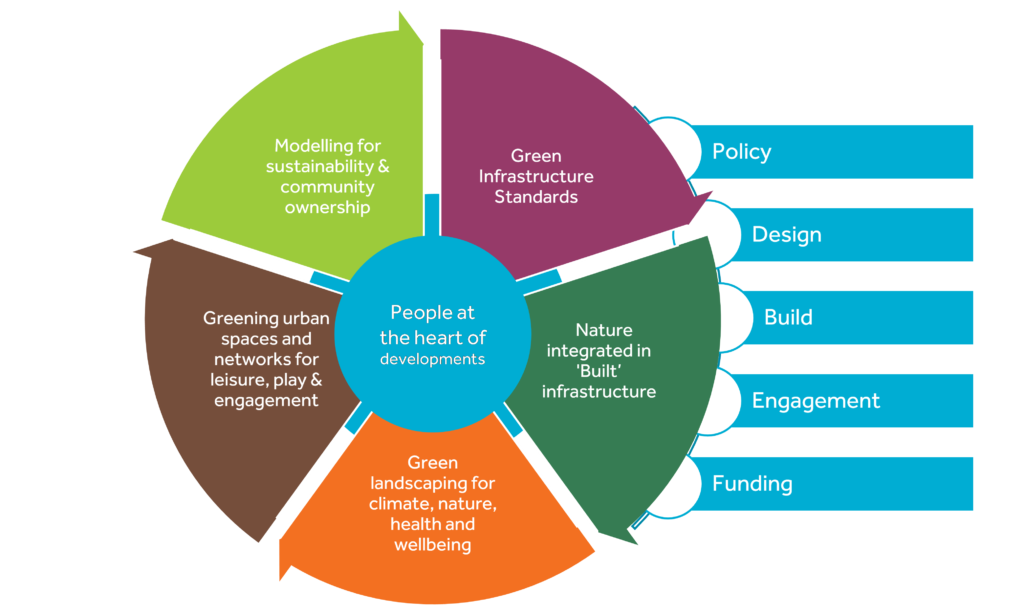Building Nature In
We urgently need to start Building Nature In to our built environment in order to create and protect natural ecosystems and strengthen the connection between people and nature.
Join us as we advocate and influence for change.
Nature has an important role to play in building resilience against climate change, improving the health of people and ecosystems and helping us maintain biodiversity.
Oxfordshire’s councils have all declared climate emergencies and pledged to work on reducing carbon emissions. But the South East and Oxfordshire is one of the most rapidly developing parts of the UK, with Oxfordshire planning for 100,000 new homes and 85,000 new jobs in the period 2011-31.
How can we create space for both nature, and people to thrive?
Building Nature In is about truly integrating nature and ecosystems within our built environment.
Building Nature In will enable deeper connection between people and nature in the places where they live, work and play to create more vibrant and healthy communities, reduce the effects of climate change, clean our air and water, create protect biodiversity and support our local economy.
A framework for discussion
In May 2022, we convened an expert multi-sector panel to advocate for a more joined up approach to build nature in through the planning, design and construction process. Hear from local authority policy makers, advisory bodies, planners, developers, investors, social enterprises across the public, private and third sector.
Our Building Nature In principles

We see 6 fundamental pillars for supporting a Building Nature In approach.
1. Green Infrastructure Standards
Green space provision at different scales within homes and communities, including green links between communities and green spaces, along with policy drivers to enable and support these standards.
2. Nature integrated in ‘built’ infrastructure
Built infrastructure that is designed and built for nature, climate and people (and with each in mind from the outset). For instance, integrating homes for wildlife within architecture and construction, including designing in green corridors, roadside verges and roundabouts.
3. Green landscaping for climate, nature, health and wellbeing
Building infrastructure for natural environment solutions within roads, streets, SUDs to minimise carbon and engage people in their environment. For example, the use of materials, natural landscaping and tree planting for cooling and temperature regulation as well as healthier air quality.
4. Greening urban space network design and operations for leisure, play, engagement and building skills
For instance, using natural materials and design for leisure and play spaces, community food growing; allotments; enhancing parks and gardens for people as well as nature.
5. Modelling green spaces for sustainability,
where the full community has greater ‘ownership’ and engagement and where the funding needed to establish and then maintain green spaces is identified and available. Policy changes are now encouraging offsetting, habitat banking and Biodiversity Net Gain and we need to consider how these funding opportunities can support Building Nature In and shaping places for people and nature.
6. Putting people at the heart of developments
Addressing what needs to be ‘built in’ to support more diverse and equitable access to nature as well as ensuring that everyone has real opportunities to engage with it. This means, supporting healthy places through intergenerational, diverse and inclusive access and understanding the important role of volunteering in community cohesion.
Commentary
Biodiversity and translating COP15
Jayne Manley traces a journey from global biodiversity targets into what could emerge on the ground for people and the places where we live and work.How can we counter Biodiversity Loss?
Ahead of the Global biodiversity conference COP15 in November 2022, Earth Trust met with other indsutry experts to share a range of solutions to the biodiversity crisis and how the construction industry might learn to embrace them, at a roundtable hosted by Building and Atkins.